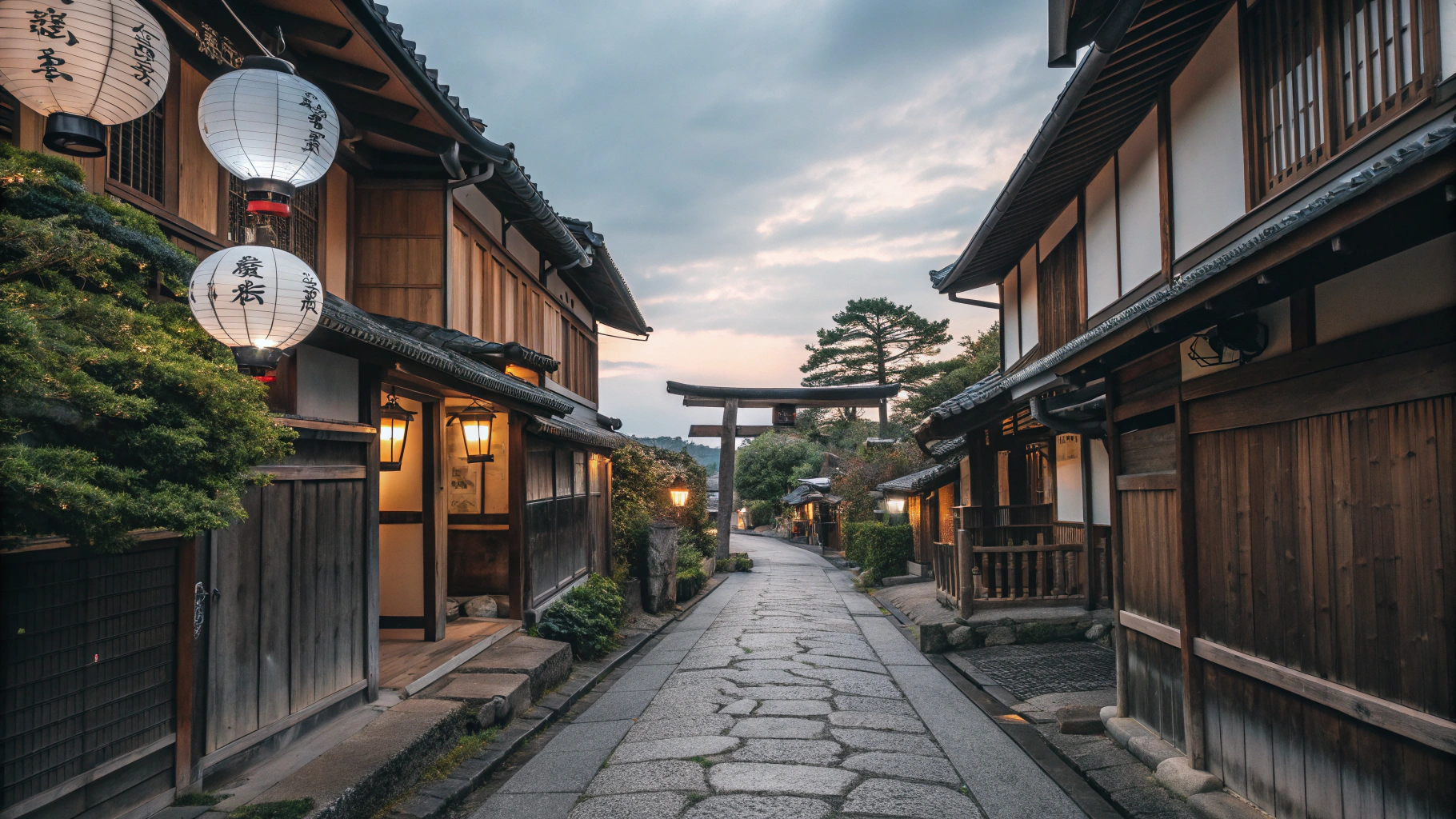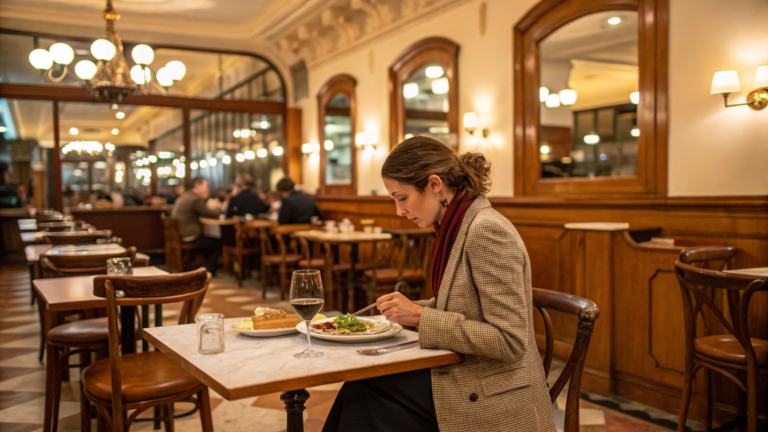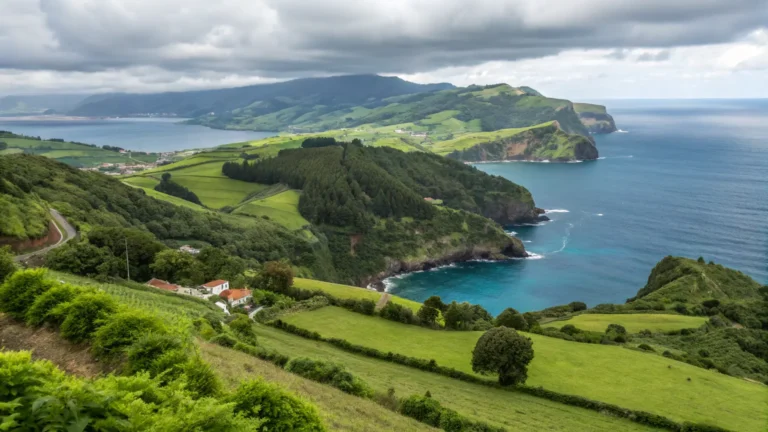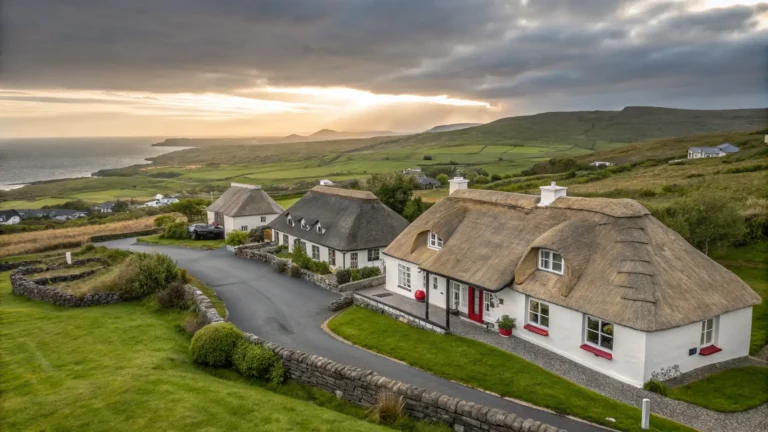Japan Itinerary 7 Days How to See More in Less Time
Last updated on May 26th, 2025 at 11:18 pm
Picture this: I’m standing in my kitchen at 2 AM, frantically googling “can you really see Japan in a week” while my coffee gets cold. My boss had just approved my vacation request, but I only had seven days. Seven measly days to explore a country that’s been on my bucket list since I watched my first Studio Ghibli movie as a kid.
Everyone said I was crazy. My mom? “Honey, you need at least two weeks.” My well-traveled cousin Jake? “Dude, seven days is basically a long weekend there.” Even the travel forums were full of people saying anything less than ten days was pointless.
Well, guess what? They were all wrong.
That seven-day trip to Japan in April 2022 became the most packed, exhausting, and absolutely incredible week of my life. I ate ramen for breakfast in Tokyo, meditated with monks in Kyoto, soaked in hot springs while staring at Mount Fuji, and somehow managed to squeeze in a deer-feeding session in Nara.
The trick wasn’t trying to see everything – it was being smart about what I chose to see and how I moved between places. Want to know exactly how I did it? Buckle up, because I’m about to share every detail, mistake, and genius move from my whirlwind Japanese adventure.
Why Seven Days Actually Works Better Than You Think
Here’s the thing nobody tells you about Japan: it’s perfectly designed for efficient travel. While my friends were spending three weeks backpacking through Europe and seeing maybe six cities, I managed to experience four completely different sides of Japan in the same amount of time it takes to drive across Texas.
The trains run like clockwork. I’m talking about trains that arrive at exactly 11:43 AM, not 11:44 AM. The distances between major cities are manageable – Tokyo to Kyoto takes the same time as flying from New York to Chicago, except you’re on the ground watching rice fields blur past your window.
Plus, Japan has this incredible thing where every experience feels complete and meaningful. A single meal at a tiny ramen shop can be more memorable than an entire day in some other countries. One afternoon in a temple garden gave me more peace than most week-long vacations.
Here’s what I figured out about timing:
- Three days lets you get comfortable but not really dig deep
- Two weeks means you’ll start feeling homesick and overspent
- Seven days hits that sweet spot where every moment feels precious
- You stay excited and energized the whole time
The key is accepting that you’re getting a taste, not the full meal. And honestly? That taste will be so good you’ll already be planning your return trip.
Getting Ready: The Stuff I Wish Someone Had Told Me
My biggest screwup was thinking I could just wing the planning part. Japan isn’t like hopping around European cities where you can figure things out as you go. A little prep work upfront saved my entire trip.
The JR Pass Situation
Okay, this is where I almost messed up big time. I read about the Japan Rail Pass but thought “$300 seems expensive for train tickets.” Then I looked up individual bullet train prices. Tokyo to Kyoto? $130 one way. My jaw hit the floor.
I ordered my JR Pass online three days before leaving (you can’t buy them in Japan, only exchange vouchers you buy beforehand). Picking it up at Haneda Airport took ten minutes, and suddenly I had unlimited access to almost every train in the country for a week. Best travel purchase I’ve ever made.
Money Stuff That Caught Me Off Guard
Japan still runs on cash more than anywhere else I’ve been. I brought $800 in cash and used most of it. Credit cards work at big hotels and department stores, but that amazing tiny ramen place with the best tonkotsu broth? Cash only.
7-Eleven ATMs are your friend – they actually work with foreign cards, unlike many Japanese banks. I hit one every couple days to stay stocked up.
Weather Timing Matters More Than You Think
I went in April, which everyone said was perfect cherry blossom season. They weren’t wrong – the sakura were incredible. But they also forgot to mention that half of Japan visits temples during cherry blossom season too. I waited 45 minutes just to get into Kiyomizu-dera Temple in Kyoto.
If you’re flexible with dates, consider these alternatives:
- May: Cherry blossoms are done, but weather’s perfect and crowds thin out
- October: Fall colors are stunning, temperatures are comfortable
- January: Cold but beautiful, way fewer tourists, and hot springs feel amazing
My Day-by-Day Breakdown (With All the Real Details)
Days 1-2: Tokyo – Controlled Chaos in the Best Way
Day 1: Landing and Getting My Bearings
Landed at Haneda around 3 PM (pro tip: Haneda is way more convenient than Narita for getting into the city). Grabbed my JR Pass, hopped on the monorail, and 30 minutes later I was checking into my hotel in Shibuya.
I picked Shibuya because I wanted to be in the thick of things, and wow – stepping out of that hotel for the first time and seeing the famous crossing was like walking onto a movie set. The energy hit me immediately.
First stop: Sensoji Temple in Asakusa. I know it’s touristy, but there’s something magical about this 1,400-year-old temple sitting in the middle of modern Tokyo. The incense, the chanting, the fortune-telling strips tied to trees – it felt like stepping through a portal.
Walking down Nakamise-dori street toward the temple, I tried taiyaki for the first time. These fish-shaped pastries filled with sweet red bean paste were warm, crispy, and completely addictive. I ended up buying three more before leaving.
Evening was all about Shibuya crossing. I found this Starbucks on the second floor with perfect crossing views, grabbed a coffee, and just watched the organized chaos below. Every light change, over a thousand people cross in perfect harmony. It’s hypnotic.
Day 2: Modern Japan Gets Weird (In the Best Way)
Started early in Harajuku because I’d read the fashion scene is most active on weekends and mornings. Walking down Takeshita Street felt like being inside an anime – teenagers with rainbow hair, platform shoes taller than my nephew, and more creative fashion in one block than I see in my entire city back home.
Then I walked five minutes to Meiji Shrine and everything changed. Suddenly I’m in this peaceful forest in the heart of Tokyo, watching people write wishes on wooden plaques and hang them under ancient trees. The contrast gave me whiplash in the best possible way.
Afternoon in Akihabara blew my mind. I’m not even into anime, but the energy there is infectious. Multi-story arcades, stores selling figurines that probably cost more than my rent, and electronics everywhere. I spent two hours in one arcade playing games I didn’t understand but couldn’t stop playing.
Dinner was at this tiny izakaya in Golden Gai – literally eight seats and a chef who spoke zero English but somehow communicated entirely through smiles and hand gestures. Best gyoza of my life.
Days 3-4: Kyoto and Nara – Time Travel is Real
Day 3: The Bullet Train and Temple Hopping
Woke up at 5 AM to catch the 6:30 AM shinkansen to Kyoto. I thought I’d be miserable being up so early, but watching the sunrise from a bullet train going 200 mph? Pure magic. Mount Fuji appeared through the morning mist like something from a painting.
Pro tip: Sit on the right side heading west for Fuji views.
First stop in Kyoto: Fushimi Inari shrine. Those thousands of red torii gates you see in every Japan photo? They’re real, and they’re spectacular. The hike to the top took me two hours, but every turn revealed another Instagram-worthy view.
Here’s what nobody tells you: go early or go late. I arrived at 9 AM and it was already getting crowded. By noon, it was a conga line of tourists.
Spent the afternoon in Gion district hunting for geishas (they prefer “geiko” in Kyoto, I learned). I got lucky around 5 PM – spotted one hurrying to an appointment, traditional wooden shoes clicking on cobblestones. For about ten seconds, I felt like I’d time-traveled to old Japan.
Day 4: Nara’s Deer Made My Day
Nara was my wild card pick – just 45 minutes from Kyoto by train, and everyone said the deer park was worth seeing. Everyone was right, but they undersold it completely.
These aren’t zoo animals. They’re wild deer that have learned to bow for crackers. I’m a grown man, and I spent three hours just hanging out with these gentle, polite deer who seemed genuinely happy to see visitors.
Todaiji Temple houses a bronze Buddha statue that’s 50 feet tall. The building itself is enormous – apparently it’s only two-thirds the size of the original from over 1,000 years ago. Standing in front of that Buddha, I felt about as big as an ant.
Got back to Kyoto for my ryokan experience. Sleeping on tatami mats, eating a kaiseki dinner that was basically edible art, and soaking in a traditional bath – this is the Japan you see in movies, except it’s real and you’re living it.
Days 5-6: Mount Fuji and Hot Springs – Nature’s Greatest Hits
Day 5: Hakone and Lake Views
The journey from Kyoto to Hakone takes about three hours, but the mountain scenery made it fly by. Hakone is famous for Mount Fuji views and hot springs, though I should mention – Fuji is a diva. It hides behind clouds more often than not.
I got lucky with clear skies and perfect views from Lake Ashi. The pirate ship cruise sounds silly (because it is), but floating across a mountain lake with Mount Fuji reflected in the water? That’s a moment you remember forever.
The Hakone Open-Air Museum was my surprise favorite. Sculpture gardens set against mountain backdrops, with hot spring foot baths scattered throughout so you can soak your feet while admiring art. Genius combination.
Day 6: Hot Springs and Mountain Air
This is where staying at a traditional ryokan really pays off. I woke up at 6 AM, stepped onto my room’s balcony, and Mount Fuji was right there, bathed in morning light. The onsen (hot spring bath) with mountain views at sunrise? That’s a religious experience right there.
Spent the morning at Chureito Pagoda for the classic Mount Fuji shot. Even with dozens of other photographers, the five-story pagoda with Fuji in the background is absolutely stunning.
The train ride back to Tokyo that evening felt bittersweet. I was already missing the mountain air and peaceful hot springs.
Day 7: Tokyo Farewell Tour
My flight wasn’t until evening, so I had one last morning in Tokyo. Headed straight to Tsukiji Outer Market for the freshest sushi breakfast of my life. Tuna that was swimming yesterday tastes completely different than anything back home.
Spent my last few hours wandering through Tokyo Station’s underground shopping area, picking up final souvenirs and marveling at how this massive transportation hub feels more like a luxury mall.
On the plane home, I was already planning my next trip.
Transportation Secrets That Saved My Trip
The JR Pass covers most of what you need, but here are the insider tricks I learned:
Google Translate with camera function is magic. Point your phone at any sign and it translates in real time. Saved me countless times trying to figure out which train platform to use.
IC cards for local transport. Your JR Pass covers JR lines, but many Tokyo subways require separate payment. I loaded a Suica card with $50 and used it for trains, buses, and even convenience store purchases.
Download Hyperdia app. Shows exact train schedules, platform numbers, and travel times. Japanese trains are incredibly punctual – if it says 2:14 PM, it leaves at 2:14 PM.
Rush hour is real. Avoid trains from 7-9 AM and 5-7 PM if possible. I made the mistake of taking the Yamanote Line at 8 AM once. Never again.
Food Adventures That Changed My Life
Japanese convenience store food is better than most restaurants back home. Those perfectly triangular onigiri rice balls, crispy karaage fried chicken, and fresh sandwiches became my go-to quick meals.
Ramen varies by region completely. Tokyo’s rich tonkotsu broth is nothing like Kyoto’s lighter, more delicate versions. Don’t just hit the famous places – some of my best meals came from tiny shops with no English menus where I just pointed at what looked good.
Department store basement food courts are hidden gems. The depachika floors have incredible prepared foods, artisanal chocolates, and fruit so perfect it costs $20 per apple (I bought one – worth every yen).
Quick budget breakdown from my trip:
- Hotels: $80-90/night for business hotels, $250/night for ryokan
- Food: $35-60/day (mix of convenience stores and restaurants)
- JR Pass: $280 for 7 days
- Attractions: $10-25 each
- Daily total: Around $180-220
Cultural Stuff That Actually Matters
Japanese etiquette gets overcomplicated online, but honestly, most people are incredibly forgiving of tourists. Still, these basics will earn you smiles:
Bow slightly when greeting people. Nothing fancy, just a small nod shows respect.
Shoes off in homes, some restaurants, and temples. Wear decent socks – you’ll be showing them off.
Don’t eat while walking. Grab food, find a spot to stand still, then eat.
Keep voices down on trains. Japanese public transport is surprisingly quiet and peaceful.
The most surprising thing? Japanese people are incredibly helpful, even with language barriers. I got completely lost looking for my Kyoto ryokan, and an elderly woman walked me there personally, even though it was several blocks out of her way.
Why This Trip Changed Everything
Looking back on my week in Japan, I realize it wasn’t just a vacation – it was proof that you don’t need months to have a life-changing travel experience. Sometimes a week of perfect moments beats a month of okay ones.
Maybe your perfect moment will be watching cherry blossoms fall while drinking matcha in a temple garden. Maybe it’ll be that incredible bowl of ramen at midnight in a tiny Tokyo alley. Or maybe it’ll be the peaceful silence of a mountain onsen at sunrise with Mount Fuji reflected in the water.
Seven days in Japan isn’t just enough – it’s perfect for a first visit. You’ll see incredible sights, taste amazing food, and experience a culture that somehow manages to be both ancient and futuristic. Most importantly, you’ll leave knowing exactly why you need to come back.
What’s stopping you from booking that trip? Drop your questions in the comments – I love helping people discover this amazing country!








One Comment